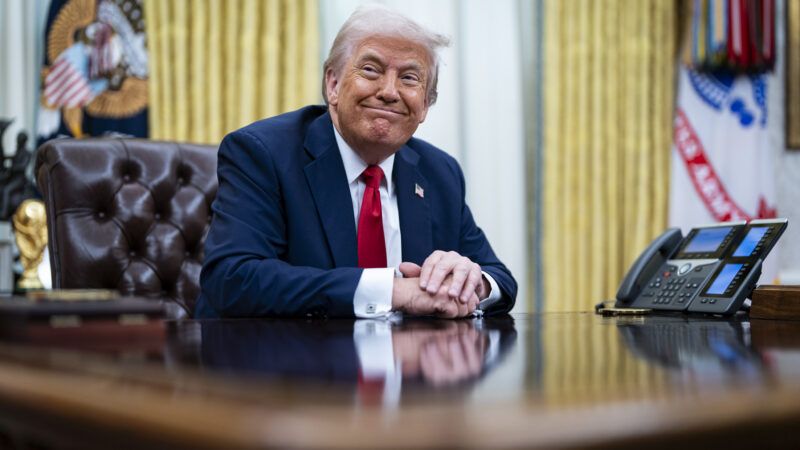Trump's Tariff Blueprint Called for 'Careful Planning' and 'Precise Execution'
With him in charge, it never stood a chance.

If you want to understand what President Donald Trump is trying to accomplish with his massive tariff hikes, the best place to start is probably a report published not long after Trump won last year's election.
That essay, titled "A User's Guide to Restructuring the Global Trading System," was authored by Stephen Miran, then a senior strategist at Hudson Bay Capital and a former Treasury Department official from the first Trump administration. He's now one of the White House's top economic advisors. The 41-page report is a concise (given the complexity of the issues involved) blueprint for what Miran called a "generational change in the international trade and financial systems" necessitated by an economic imbalance caused by an overvalued dollar.
Tariffs, Miran argued, are one of the means to that end. Raising tariffs could generate revenue and change the balance of the U.S. dollar versus other currencies in ways that help America offset the costs incurred by, for example, providing national security services to so much of the world.
To put it in more practical terms ripped from recent headlines: If the U.S. is expected to bear the burden of fighting the Houthis to keep shipping lanes in the Red Sea open, then it should find a way to offset those costs by taxing the trade that's able to flow because of America's security umbrella. We can't set up a toll booth in the Red Sea, so tariffs are the next best thing.
As someone who doesn't see trade as a zero-sum game and recognizes that global supply chains make everyone wealthier, I'm not particularly swayed by this idea. But it isn't hard to see how Trump, who views everything as transactional (and who has been enamored with tariffs since the 1980s), would be into it.
Still, he probably should have read Miran's recommendations a bit more carefully.
When it comes to implementing those tariffs, Miran repeatedly stresses the need to move deliberately and in ways that "are minimally disruptive to markets and the economy."
"There is a path by which the Trump Administration can reconfigure the global trading and financial systems to America's benefit," Miran wrote at the end of his essay, "but it is narrow, and will require careful planning, precise execution, and attention to steps to minimize adverse consequences."
That's, uh, not what's happened this week.
Trump's so-called "Liberation Day" announcement spiked U.S. tariff rates to levels not seen in more than a century. The move shocked global markets, spooked investors, and might have even woken up Congress to the economic threat posed by effectively unlimited executive economic powers. Rather than being carefully planned or precisely executed, the new tariff rates appear to be based on nonsensical calculations and applied in the most haphazard way possible. Trump is hiking tariffs on countries with which America runs trade surpluses and on places inhabited only by penguins.
In short: Even if the Trump administration was using Miran's essay as a roadmap for reshaping global markets, it has already steered wildly off the edge.
Or, as Derek Thompson of The Atlantic puts it, Trump's tariffs are "less an expression of economic theory and more a Dadaist art piece about the meaninglessness of expertise."
Advocates of free trade are never going to support Trump's fixation with raising tariffs. But the political danger to Trump is that his chaotic approach will also alienate those who might have been nodding along with Miran's ideas or even Vice President J.D. Vance's theories about how to restore American manufacturing.
In an excellent essay on his Substack, Noah Millman grapples with some of these same issues. If Trump is seeking to overturn the global economic order and rewrite the rules in ways that favor America, Millman concludes, then this week's tempestuous display is hardly the best way to start that process.
"I get the whole 'madman theory' that Trump seems to be fond of," he writes. "But there's a difference between having someone believe you're crazy and having them believe you're an idiot."
Even critics of free trade who might support some of the Trump administration's tariff policy goals—despite the contradictions in them—ought to be questioning how this is playing out. Like libertarians who might applaud the Department of Government Efficiency's goals but dispute some of what it is actually doing, some on the New Right who favor higher trade barriers might be getting what they want in the stupidest way possible.
With Trump, this outcome seems almost inevitable. Against him, a policy requiring "careful planning" and "precise execution" never stood a chance.
Show Comments (28)